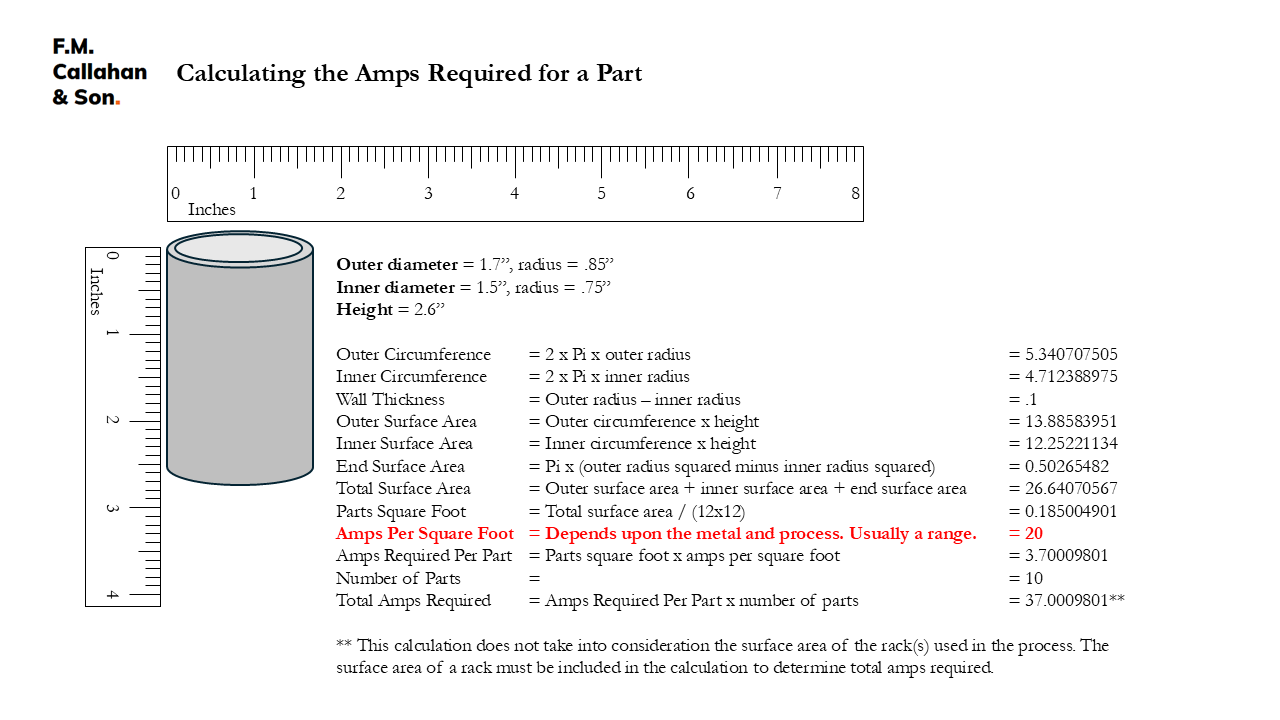Calculating Plating Finish
Maintaining the correct electrical charge in the tank is critical for successful plating and finishing. If the charge is too low, the part will not achieve the minimum dimension required by the customer. If the electrical charge is too high, the finish on the part may exceed the maximum allowed by the engineers. In addition, parts can be “burned” by exposure to excessive electrical charge. Therefore, the calculation of the amps required for a job is essential to the successful finishing of the part.
In summary, the process to calculate the amps for a job consists of the following steps:
- Calculate the surface area of the part.
- Convert the surface area into “square footage per part” (#1/144)
- Identify the “amps per square foot” for the metal and process to be completed. This number is usually within a range.
- Calculate the “amps required per part”. (#2 x #3)
- Multiply by the total number of parts.
These calculations will result in the total amps required for the entire job.
